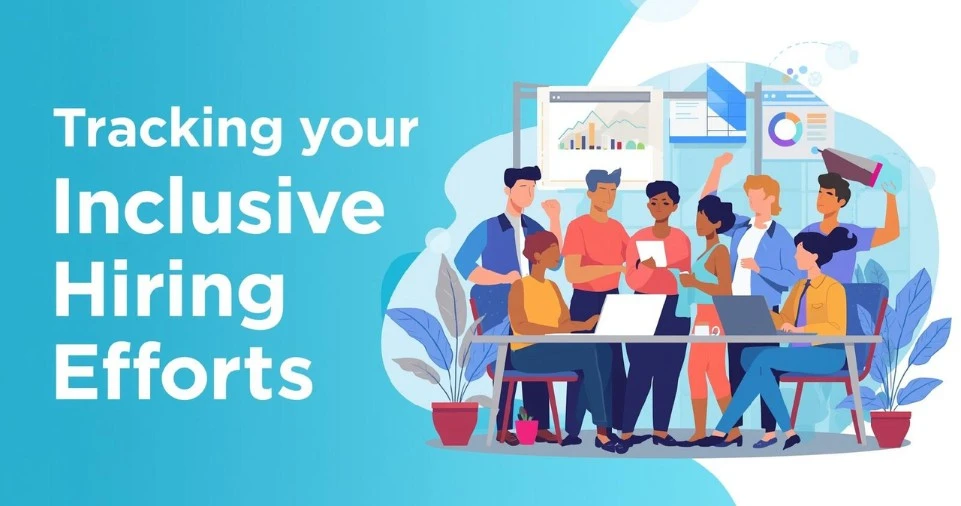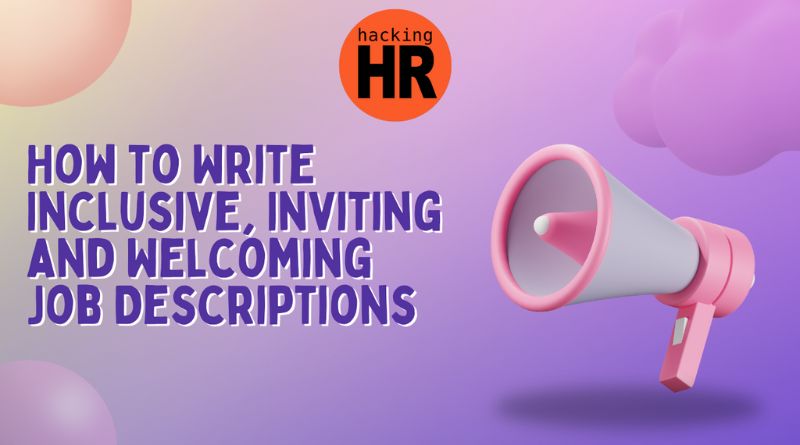Your job description is more than a list of requirements—it’s the first conversation between your organization and potential employees. This initial touchpoint shapes perceptions, influences application decisions, and ultimately determines who sees themselves fitting into your company culture.
Research reveals a striking reality: 39% of job seekers have turned down opportunities or declined to apply due to perceived lack of inclusion at a company. Even more telling, 67% of candidates consider workforce diversity an important factor when evaluating potential employers. These aren’t just statistics—they represent talented professionals making career decisions based on how welcome they feel before ever submitting an application.
Structured job descriptions serve as the foundation for inclusive hiring practices. By systematically addressing bias, clarifying essential requirements, and communicating organizational values, companies can transform their recruitment process from a barrier into a bridge that connects them with diverse, high-caliber talent.
This comprehensive guide explores how thoughtfully crafted job descriptions promote equity, expand talent pools, and contribute to building innovative, high-performing teams.
What Makes a Job Description “Inclusive”?

An inclusive job description goes beyond simply avoiding discriminatory language. It represents a proactive recruitment tool designed to attract qualified candidates from diverse backgrounds by using welcoming language, focusing on essential competencies, and clearly communicating organizational commitment to diversity, equity, and inclusion (DEI).
Core Principles of Inclusive Job Descriptions
Inclusive job descriptions prioritize:
- Skill-based requirements over subjective personality traits or cultural assumptions
- Gender-neutral language that avoids masculine or feminine-coded terminology
- Clear, accessible writing free from industry jargon and unnecessary acronyms
- Essential qualifications limited to what’s genuinely required for success
- Growth opportunities emphasizing learning and development over innate brilliance
- Transparent benefits including salary ranges, remote work options, and DEI initiatives
The distinction between traditional and inclusive job postings becomes evident when examining their construction and impact on candidate behavior.
The Business Case: Why Inclusive Hiring Matters
The benefits of diverse teams extend far beyond optics or compliance—they directly impact organizational performance, innovation, and profitability.
Performance and Financial Returns
Organizations that embrace inclusive hiring practices consistently outperform their competitors across multiple metrics:
| Diversity Metric | Performance Impact | Source |
|---|---|---|
| Gender diversity on executive teams | 25% higher profitability likelihood | McKinsey |
| Ethnic and cultural diversity | 36% higher profitability likelihood | McKinsey |
| Overall diverse teams | 12% higher employee performance | Gartner |
| Gender-diverse, inclusive teams | 50% better performance than homogeneous teams | Gartner |
| Racial diversity | 35% above-industry-norm financial returns | Forbes |
Innovation and Problem-Solving
Diverse teams bring varied perspectives, experiences, and approaches to challenges. This cognitive diversity translates into:
- Enhanced creative problem-solving through multiple viewpoints
- Better decision-making processes that consider broader implications
- Improved market understanding reflecting diverse customer bases
- Increased adaptability to changing business environments
Talent Attraction and Retention
The modern workforce increasingly prioritizes inclusive workplace cultures:
- 78% of employees consider DEI important when choosing employers
- 53% of workers have rejected jobs due to perceived lack of inclusion
- 64% of job seekers view company diversity commitment as crucial in accepting offers
These numbers underscore a fundamental shift: inclusive hiring isn’t just ethically sound—it’s a competitive necessity for attracting and retaining top talent.
Key Elements of Structured Inclusive Job Descriptions
Building an inclusive job description requires attention to multiple components, each playing a critical role in attracting diverse candidates.
1. Job Title: Clear and Neutral
Your job title sets the tone immediately. Effective titles are:
Avoid:
- Gendered terms: “Salesman,” “Waitress,” “Cameraman”
- Age-coded language: “Junior,” “Recent graduate,” “Young professional”
- Vague buzzwords: “Ninja,” “Rockstar,” “Guru,” “Wizard”
Use Instead:
- Gender-neutral alternatives: “Sales Associate,” “Server,” “Camera Operator”
- Experience-focused descriptors: “Entry-level,” “Experienced,” “Senior-level”
- Clear role descriptions: “Software Developer,” “Marketing Specialist,” “Customer Success Manager”
2. Job Summary: Mission-Driven and Welcoming
The opening paragraph should accomplish three objectives:
- Explain the role’s purpose and impact on the organization
- Connect to company mission and values
- Create excitement about contribution opportunities
Example of Effective Summary:
“We’re seeking a Marketing Specialist to help expand our reach to underserved communities. In this role, you’ll develop campaigns that reflect diverse perspectives and create meaningful connections with our growing customer base. This position offers opportunities to learn emerging marketing technologies while contributing to our mission of accessible healthcare for all.”
This example emphasizes impact, learning opportunities, and meaningful work—elements that resonate with candidates prioritizing values fit over traditional perks.
3. Responsibilities: Action-Oriented and Accessible
When outlining responsibilities:
Focus on outcomes, not assumptions:
❌ “Must be able to walk between departments to deliver documents” ✅ “Coordinates document delivery between departments”
❌ “Looking for someone with natural leadership abilities” ✅ “Leads team meetings and coordinates project timelines”
Use accessible language:
- Avoid: “Synergize cross-functional stakeholders to optimize KPIs”
- Use: “Work with different teams to improve key performance metrics”
4. Qualifications: Essential vs. Preferred
One of the most impactful changes organizations can make is limiting required qualifications to 5-6 truly essential criteria. Research shows that women and underrepresented minorities are less likely to apply when they don’t meet 100% of listed requirements, while other candidates may apply when meeting only 60% of criteria.
Structure qualifications strategically:
| Required (Must-Have) | Preferred (Nice-to-Have) |
|---|---|
| 3+ years customer service experience | Bachelor’s degree in related field |
| Proficiency in CRM software | Experience with Salesforce specifically |
| Strong written communication skills | Second language fluency |
| Demonstrated problem-solving ability | Industry certifications |
| Collaboration experience | Prior remote work experience |
5. Growth Mindset Language
Avoid “fixed mindset” terminology:
- “Best of the best”
- “Top talent only”
- “Brilliant minds”
- “Exceptional individuals”
- “Industry whiz”
Use “growth mindset” alternatives:
- “Eager to learn and develop”
- “Committed to continuous improvement”
- “Values feedback and growth”
- “Dedicated and persistent”
- “Collaborative team member”
This shift is particularly important because underrepresented candidates respond more positively to language emphasizing effort, learning, and development over innate genius.
Common Barriers: How Job Descriptions Deter Diverse Candidates
Even well-intentioned organizations often include subtle barriers in their job postings that discourage qualified candidates from diverse backgrounds.
Gender-Coded Language
Certain words carry implicit gender associations that can skew applicant pools:
Masculine-Coded Terms:
- Competitive, dominant, aggressive, assertive
- Individual, independent, self-reliant
- Challenging, ambitious, driven
- Analytical, logical, decisive
Feminine-Coded Terms:
- Collaborative, supportive, empathetic
- Nurturing, considerate, understanding
- Interpersonal, responsible, dedicated
- Loyal, committed, conscientious
Gender-Neutral Alternatives:
| Instead of… | Try… |
|---|---|
| Aggressive | Results-oriented, proactive |
| Dominant | Confident, influential |
| Nurturing | Supportive, developmental |
| Empathetic | Mindful, emotionally intelligent |
| Rockstar/Ninja | Skilled professional, expert |
Tools like the Gender Decoder can help identify these subtle biases in existing job descriptions.
Age Bias and Discriminatory Phrasing
Age-related bias manifests in both obvious and subtle ways:
Problematic Phrases:
- “Recent college graduate”
- “Digital native”
- “Young and energetic team”
- “Seasoned professional with 20+ years”
- “Looking for fresh perspectives”
Inclusive Alternatives:
- “Entry-level position” or “0-2 years experience”
- “Digitally proficient” or “Comfortable with technology”
- “Dynamic team environment”
- “Extensive experience preferred”
- “Diverse perspectives valued”
Cultural Insensitivity and Jargon
Industry-specific terminology and cultural references can create unnecessary barriers:
Exclusive Language Examples:
- “Native English speaker” (excludes proficient non-native speakers)
- Sports metaphors: “Quarterback our initiatives,” “Hit it out of the park”
- Military terms: “In the trenches,” “Take the hill,” “Deploy resources”
- Company-specific acronyms without explanation
More Inclusive Approach:
- “English proficiency required”
- “Lead our initiatives,” “Exceed expectations”
- “Work collaboratively,” “Implement strategies,” “Allocate resources”
- Spell out acronyms on first use or provide context
Ableist Assumptions
Physical or cognitive ability requirements should only be included when genuinely essential:
Problematic:
- “Must be able to lift 50 pounds”
- “Requires standing for extended periods”
- “Fast-paced environment”
- “Must have valid driver’s license”
Better:
- “Moves equipment up to 50 pounds” (focuses on task, not ability)
- “Position involves physical activity”
- “Time-sensitive deadlines and multiple priorities”
- “Reliable transportation required” (unless driving is essential function)
Step-by-Step Guide: Writing Your Inclusive Job Description

Transform your recruitment process with this systematic approach to creating structured, inclusive job postings.
Step 1: Define Essential Functions (Before Writing)
Before drafting your description:
- Identify 5-6 core competencies truly required for success
- Distinguish between “must-have” and “nice-to-have” qualifications
- Eliminate degree requirements unless professionally mandated
- Focus on transferable skills rather than specific industry experience
Example Competency Framework:
| Competency | Why It Matters | How to Assess |
|---|---|---|
| Communication | Collaborates across departments | Behavioral interview questions |
| Problem-solving | Addresses customer issues | Situational scenarios |
| Technical proficiency | Uses required software | Skills assessment |
| Learning agility | Adapts to new processes | Past examples of learning |
| Values alignment | Fits team culture | Cultural interview questions |
Step 2: Audit for Bias
Use multiple methods to identify problematic language:
Manual Review:
- Read aloud to different team members
- Check for gendered pronouns (he/she)
- Identify personality-focused language
- Remove unnecessary requirements
Technology Tools:
- Textio: Analyzes job descriptions for bias and provides real-time suggestions
- Gender Decoder: Identifies masculine and feminine-coded language
- Hemingway Editor: Ensures readability and clarity
- Applicant Tracking Systems: Many include bias-detection features
Diverse Feedback:
- Share drafts with employees from various backgrounds
- Ask employee resource groups for input
- Consider perspectives of people with disabilities
- Get feedback from different age groups
Step 3: Structure with Inclusive Language
Opening Statement Template:
“[Company Name] is committed to building a diverse and inclusive workplace where everyone can thrive. We’re seeking a [Job Title] who will [primary responsibility] while [secondary impact]. This role offers opportunities to [learning/growth element] and contribute to our mission of [company purpose].”
Responsibilities Section:
Format responsibilities as outcomes rather than traits:
- Start with action verbs (coordinates, develops, analyzes, creates)
- Focus on what needs to be accomplished
- Avoid physical or ability-based language unless essential
- Include collaboration and independence opportunities
Qualifications Framework:
Required Skills:
• [Skill 1] – demonstrated through [evidence]
• [Skill 2] – typically gained via [experience type]
• [Skill 3] – shown by [achievement or credential]
Preferred Qualifications:
• [Nice-to-have 1]
• [Nice-to-have 2]
• [Nice-to-have 3]
We encourage applications from candidates with diverse experiences and non-traditional backgrounds.
Step 4: Highlight DEI Commitment and Benefits
Don’t just state commitment—demonstrate it:
Effective DEI Statement Structure:
- State your commitment clearly and specifically
- Provide concrete examples of initiatives
- Mention employee resource groups or diversity programs
- Highlight relevant awards or recognition
- Invite diverse applicants explicitly
Example:
“We’re committed to creating an inclusive workplace that reflects the communities we serve. Our diversity initiatives include mentorship programs for underrepresented groups, flexible work arrangements to support work-life integration, employee resource groups spanning multiple identities, and partnerships with organizations promoting diversity in [industry]. We particularly encourage applications from women, people of color, LGBTQ+ individuals, people with disabilities, and veterans.”
Benefits to Emphasize:
- Remote work and flexible schedules
- Parental leave policies
- Professional development budgets
- Mental health support
- Accessibility accommodations
- Employee resource groups
- Salary transparency (include range when possible)
Step 5: Expand Distribution Channels
Posting to the same platforms produces the same candidate pools. Diversify your reach:
Diversity-Focused Job Boards:
- Jopwell: Black, Hispanic/Latine, and Native American professionals
- PowerToFly: Women and underrepresented groups in tech
- /dev/color: Black software engineers and technologists
- Out & Equal: LGBTQ+ professionals
- Hire Autism: Individuals on the autism spectrum
- iBreak: Career returners (often women after childcare breaks)
- Women in Hardware: Women and non-binary people in hardware
- Latinx Who Design: Latinx design professionals
Community Partnerships:
- Partner with HBCUs (Historically Black Colleges and Universities)
- Engage with Hispanic-serving institutions
- Connect with veterans’ organizations
- Collaborate with disability advocacy groups
- Work with women in tech groups
Employee Networks: When requesting referrals, specifically ask: “We’re focused on building a diverse team. Do you know talented professionals from backgrounds currently underrepresented in our organization who might be interested?”
Advanced Strategies for Inclusive Hiring
Beyond the job description itself, several practices enhance inclusive recruitment:
The “Rule of Two” in Final Interviews
Research demonstrates that having at least two candidates from underrepresented backgrounds in your final interview pool significantly increases the likelihood of diverse hires. When there’s only one underrepresented candidate, they’re often viewed as a “token” and face additional scrutiny.
Implementation:
- Set this as a goal (not a quota) early in the process
- Expand sourcing if necessary to meet this threshold
- Ensure diverse interview panels as well
- Train hiring managers on this research
Competency-Based Structured Interviews
Replace subjective “culture fit” assessments with objective competency evaluations:
Traditional Interview Question: “Tell me about yourself.”
Competency-Based Alternative: “Tell me about a time you had to deliver difficult feedback to a team member. How did you approach it, and what was the outcome?” (Assessing: Communication skills)
Benefits of Structured Interviews:
- All candidates answer the same questions
- Responses compared against predetermined criteria
- Reduces impact of unconscious bias
- More legally defensible
Evaluation Rubrics
Create scoring matrices before interviewing:
| Competency | Interview Question | 1 (Below) | 3 (Meets) | 5 (Exceeds) | Candidate Score |
|---|---|---|---|---|---|
| Problem-solving | “Describe a complex problem you solved” | Vague or no example | Clear example with results | Multiple examples, quantified impact | ___ |
| Communication | “Share how you delivered bad news” | Avoided situation | Addressed directly | Proactive, empathetic approach | ___ |
| Learning agility | “Tell me about learning something new” | Limited self-directed learning | Actively seeks development | Applies learning to create value | ___ |
Bias Awareness in Deliberations
During hiring discussions:
Challenge these common biases:
- Affinity bias: Preferring candidates similar to ourselves
- Halo effect: One positive trait overshadowing everything
- Horn effect: One negative trait overshadowing strengths
- Confirmation bias: Seeking information supporting initial impressions
- Personality criticism: Describing identical traits differently (“assertive” vs. “aggressive”)
Best Practices:
- Have hiring manager speak last to avoid groupthink
- Focus on evidence from interviews, not impressions
- Apply “benefit of the doubt” consistently across all candidates
- Use “values fit” or “culture add” instead of “culture fit”
Tools and Resources for Creating Inclusive Job Descriptions
Leverage technology and expertise to enhance your inclusive hiring efforts:
Bias Detection Software
| Tool | Key Features | Best For |
|---|---|---|
| Textio | Real-time language optimization, predicts candidate response, tracks outcomes | Comprehensive bias detection and optimization |
| Gender Decoder | Identifies masculine/feminine-coded words | Quick, free gender bias check |
| Ongig | Text analyzer, readability scoring, bias alerts | Job description transformation |
| Applied | De-biasing throughout hiring process | End-to-end inclusive recruitment |
AI-Powered Job Description Generators
Modern applicant tracking systems often include AI assistants:
- TalentHR: AI job description writer generates bias-free postings
- Lever: Inclusive language suggestions
- Greenhouse: Structured interview guides
- Workable: Template library with inclusive options
Professional Development Resources
Training Programs:
- Peoplism: DEI-focused organizations (consulting and interviewer training)
- LinkedIn Learning: Unconscious bias courses
- SHRM: Inclusive workplace certifications
Industry Groups:
- Society for Human Resource Management (SHRM)
- Diversity Best Practices
- National Diversity Council
- Out & Equal Workplace Advocates
Measuring Success: Tracking Your Inclusive Hiring Efforts

Creating inclusive job descriptions is just the beginning. Measure impact through:
Application Metrics
Track changes in your candidate pool:
- Demographic diversity of applicants (when legally permissible to collect)
- Application rates before and after implementing inclusive descriptions
- Conversion rates from view to application
- Source effectiveness for diverse candidates
Interview and Hire Metrics
Monitor progression through your funnel:
- Interview-to-offer ratios across demographic groups
- Offer acceptance rates by candidate demographics
- Time-to-hire for diverse candidates vs. overall
- Hiring manager feedback on candidate quality
Long-Term Impact
Assess organizational outcomes:
| Metric | Measurement Frequency | Success Indicator |
|---|---|---|
| Employee diversity | Quarterly | Increasing representation |
| Retention rates | Annually by demographic | Equal or better for diverse employees |
| Promotion rates | Annually by demographic | Proportional advancement |
| Employee satisfaction | Semi-annually | High engagement scores across groups |
| Performance ratings | Annually | No disparities by demographics |
Continuous Improvement
Quarterly Reviews:
- Analyze which job descriptions attracted most diverse candidates
- Identify patterns in successful vs. unsuccessful postings
- Update templates based on findings
- Share learnings across hiring teams
Annual Assessment:
- Compare diversity hiring goals to achievements
- Survey new hires about their application experience
- Conduct exit interviews to understand retention challenges
- Adjust strategies based on comprehensive data
Common Questions About Inclusive Job Descriptions
Q: Won’t focusing on diversity mean compromising on qualifications?
A: Absolutely not. Inclusive job descriptions expand your talent pool by removing unnecessary barriers—they don’t lower standards. By focusing on essential skills rather than arbitrary requirements, you increase access to qualified candidates who may have gained expertise through non-traditional paths.
Q: How do I handle roles that genuinely require certain physical abilities?
A: Include only essential physical functions and frame them around tasks, not abilities. Instead of “must be able to stand for 8 hours,” write “position involves being on the production floor throughout shift.” This focuses on the job requirement while allowing candidates with various abilities to determine their fit.
Q: Should I include salary ranges in job descriptions?
A: Yes, when possible. Salary transparency attracts more diverse candidates by allowing them to self-select based on their needs. It also signals commitment to pay equity and reduces time wasted on both sides when expectations don’t align.
Q: How can I encourage diverse applications without making illegal statements?
A: Focus on welcoming language and demonstrating commitment through concrete examples. Instead of “seeking candidates from X background,” say “we’re committed to building a diverse team and particularly welcome applications from individuals who bring varied perspectives and experiences.”
Q: What if our industry lacks diversity overall?
A: This makes inclusive job descriptions even more critical. Expand your sourcing beyond traditional channels, partner with organizations serving underrepresented groups, and create clear pathways for candidates from non-traditional backgrounds to succeed in your industry.
Real-World Success: Putting It Into Practice
Consider implementing these changes progressively:
Month 1: Audit and Learn
- Review current job descriptions for bias
- Run 3-5 postings through Gender Decoder and Textio
- Survey recent hires about their application experience
- Identify 2-3 high-priority roles to redesign
Month 2: Pilot Program
- Rewrite selected job descriptions using inclusive frameworks
- Train hiring managers on new approach
- Post to expanded distribution channels
- Track application metrics closely
Month 3: Expand and Refine
- Analyze pilot results
- Adjust template for job description based on learnings
- Roll out inclusive job descriptions organization-wide
- Implement structured interview processes
Ongoing: Build Culture
- Make inclusive job descriptions standard practice
- Regularly update based on feedback and results
- Celebrate diversity wins publicly
- Continuously educate team on unconscious bias
Conclusion: Building Your Inclusive Hiring Foundation
Structured job descriptions represent the critical first step in creating an equitable, diverse organization. They signal values, attract varied talent, and set the foundation for building high-performing teams that reflect the world we live in.
The business case is clear: companies with diverse leadership teams are 25-36% more likely to outperform competitors financially. Diverse teams demonstrate 12% higher performance, solve problems more creatively, and better serve increasingly diverse customer bases.
Yet these benefits only materialize when organizations make deliberate, systematic changes to how they attract talent. Every word in your job description either opens doors or closes them. Every requirement either expands possibilities or limits them.
Your action plan starts now:
- Audit your current job descriptions for bias using the frameworks in this guide
- Limit qualifications to 5-6 essential competencies per role
- Eliminate gendered language and unnecessary jargon
- Expand distribution channels to reach diverse candidate pools
- Implement structured interviews with evaluation rubrics
- Measure results and continuously improve
The talent you’re seeking is out there. The question is: will your job descriptions help them find you?
Take the Next Step
Ready to transform your hiring process? Start with these immediate actions:
✅ Download bias-detection tools like Gender Decoder for your next job posting
✅ Schedule a job description audit with your HR team this week
✅ Review your last three hires: where did diverse candidates drop out of your funnel?
✅ Partner with one diversity-focused organization in your industry
✅ Train hiring managers on competency-based interviewing techniques
Building inclusive organizations doesn’t happen overnight, but every job description you improve brings you closer to the diverse, innovative team that will drive your success.
What will you change in your next job posting?






